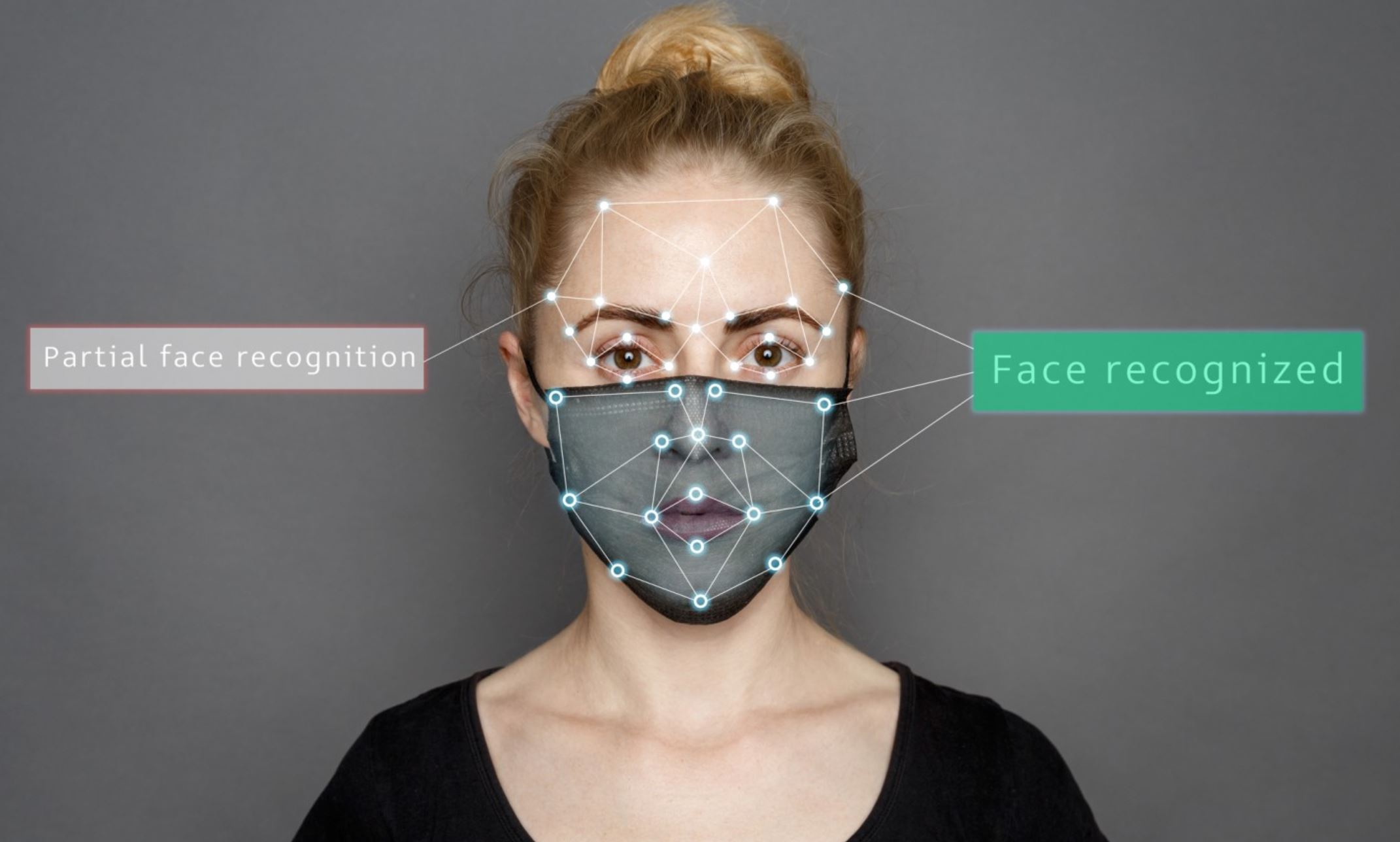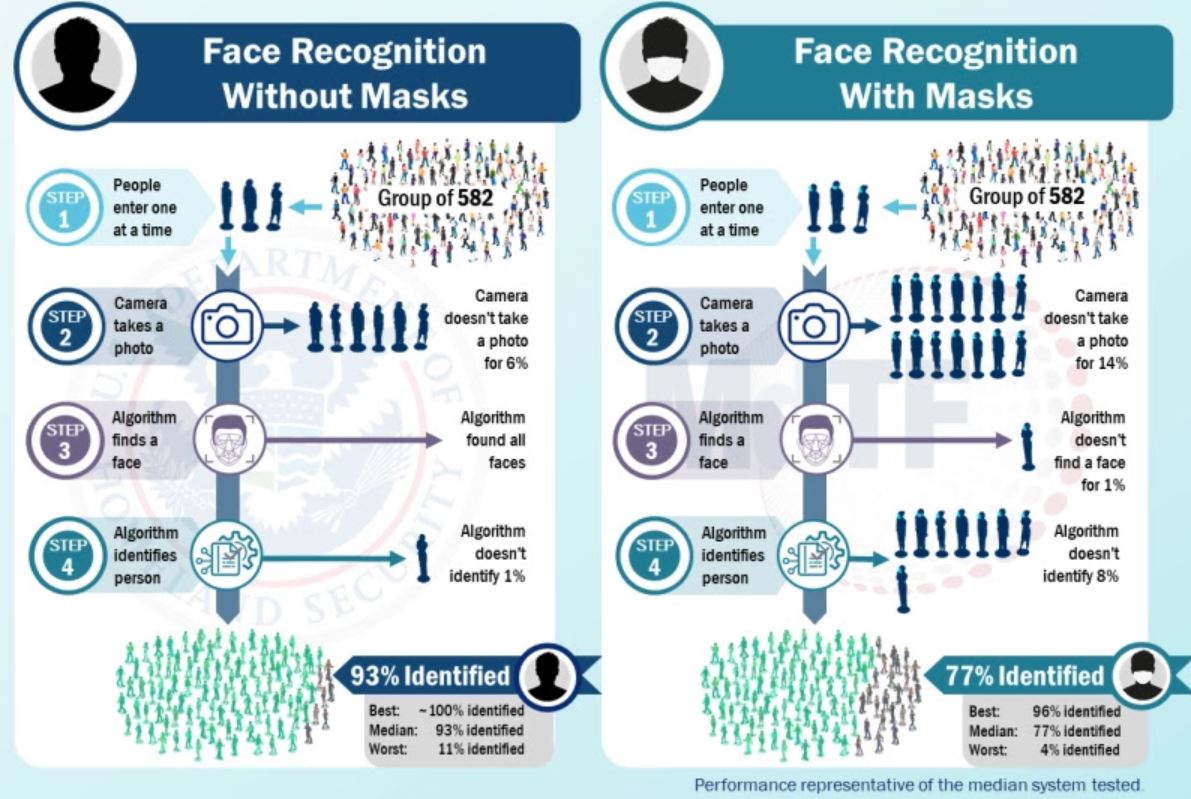 By MassPrivateI
By MassPrivateI
It is official, unless airline passengers are willing to wear motorcycle helmets or Daft Punk style masks, the Feds can use facial and iris recognition to identify nearly everyone.
According to an S&T press release, a pilot program run by DHS proves they can use facial/iris recognition to identify airline passengers.
The in-person rally, held at the Maryland Test Facility (MdTF), included 10 days of human testing during which six face and/or iris acquisition systems and 13 matching algorithms were tested with help from 582 diverse test volunteers representing 60 countries.
What is DHS’s so-called motivation to ID everyone?
According to their “Ongoing Face Recognition Vendor Test (FRVT): Face recognition accuracy with masks using pre-COVID-19 algorithms” report, their motivation to ID everyone was inspired by COVID-19.
Inspired by the COVID-19 pandemic response, the widespread requirement that people wear protective face masks in public places has driven a need to understand how cooperative face recognition technology deals with occluded faces, often with just the periocular area and above visible. An increasing number of research publications have surfaced on the topic of face recognition on people wearing masks along with face-masked research datasets.
The feds’ shameless pandemic motivation to ID airline passengers wearing masks is in full swing as is evidenced by a recent Federal News Network article.
“Another bit of work that we’ve been doing during the pandemic, obviously, is to look at – can face recognition work when somebody is wearing a protective face mask?” NIST computer scientist and biometrics expert Patrick Grother said
Taken together, these comments essentially mean DHS, TSA and the CBP were having issues IDing people wearing masks and needed to find a solution.
Become an Activist Post Patron for just $1 per month at Patreon.
According to the NIST report it does not matter if a mask covers most of a person’s face or the type[s] of masks people wear.
We baselined those with unmasked faces with the result that FNMR increases by factors of around 10, 25, and 36 respectively for the median algorithm.
The NIST is basically saying a face mask only adds a 10%-36% difficulty factor to IDing people.
There is some good news though. The shape and color of masks can confuse facial recognition.
The NIST report did acknowledge that they have a harder time IDing people with wider shaped masks and black masks.
Results show that wide-width masks generally give false negative rates about a factor of two higher than do rounder type masks. Most algorithms have higher error rates in black masks than light-blue masks. The reason for observed accuracy differences between mask color is unknown but is a point for consideration by impacted developers. Mask color also affects the rate at which some algorithms fail to produce a template from an image.
The report also noted that they did not try to ID people wearing textured face masks.
The consequences of this are that we do not capture the the increasing diversity of masks worn recently, including those with corporate logos, text, patterns, or those advertised to thwart face recognition. The possibility exists for patterned masks to induce higher facial localization errors, which is not captured in our current study. We received a suggestion that such information may serve as a soft biometric, in that a subject that always wears the same textured mask will be more identifiable.
What this means is that facial recognition AIs get confused by logos and textures. The report also admitted that if a person wears the same type of mask everywhere, officials will have a better chance of IDing them.
How can law enforcement use “soft biometrics” to ID a person?
If as person wears a ‘textured’ mask to a retail store to make a purchase, CCTV cameras and license plate readers or ‘soft biomterics’ can be used to ID them. If a person wears a ‘textured’ mask and is accompanied by a friend or family member not wearing a textured mask ‘soft biomterics’ can be used to ID their friends and family. And finally, if a person is wearing a ‘textured’ mask and uses a credit/debit card to purchase something, ‘soft biomterics’ can be used to ID them.
DHS was so ‘inspired’ to ID everyone wearing masks as a result of COVID-19 that they tested close to 90 facial recognition companies to figure out which one was the best. (pages 5 & 6)
Contrary to what the Feds have been telling the public about banning Chinse and Russian biometric companies, they tested at least 16 Chinese companies and at least one Russian company to help them ID people.
The final result of testing 90 facial recognition programs is that now DHS can ID between 77% -96% of people wearing masks.
As DHS admits they can now ID nearly every person wearing a mask.
“Through careful selection of camera systems and matching systems, it appears possible to verify most people’s identity without requiring them to remove their mask. This isn’t a perfect 100% solution, but it may reduce risks for many travelers, as well as the frontline staff working in airports, who no longer have to ask travelers to remove masks,”Arun Vemury, director of S&T’s Biometric and Identity Technology Center said.
Testing nearly a 100 facial recognition companies to help DHS and law enforcement ID people wearing masks is the opposite of inspiring. I would classify it as appalling.
Source: MassPrivateI
Top image credit: New Atlas
Subscribe to Activist Post for truth, peace, and freedom news. Send resources to the front lines of peace and freedom HERE! Follow us on Telegram, SoMee, HIVE, Parler, Flote, Minds, MeWe, Twitter and Gab.
Provide, Protect and Profit from what’s coming! Get a free issue of Counter Markets today.
DHS’s Facial/Iris Recognition Can ID Airline Passengers Wearing Masks
